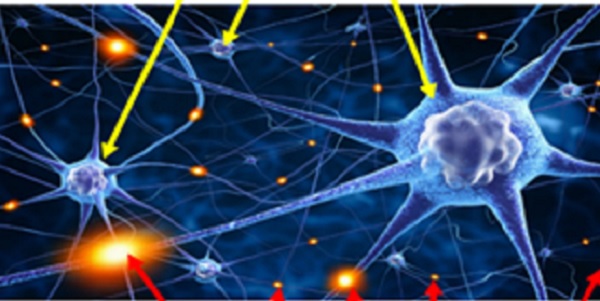
Good universities receive brains wired in specific ways and facilitate their transformation to output different wiring networks demanded by industry/society
Kampala, Uganda | KANT ATEENYI KANYARUSOKE | I write in response to Dr. Seán Mfundza Muller’s comments on the situation at many South African Universities in regard to financial incentives and pressures to increase graduate throughputs and research outputs. (See article on previous pages titled `The university is not a factory’ from South Africa’s Mail & Guardian (also at: https://mg.co.za/article/2018-10-12-00-the-university-is-not-a-factory) .
The overall thesis in Muller’s comment is on the need for academics to resist being forced to compromise quality of outputs whether in form of predetermined student pass rates or of quantity of research publications. This is perfectly acceptable, but it does not show the whole picture.
In this article, I will focus on student learning. This is influenced by many stochastic factors, but which we could probably assemble into three major pillars: Student or Learner based, Institutional or learning environment based, and Lecturer/Instructor based.
For effective learning to occur, and hence, for an individual student to sort of ‘pass’ (whatever that may mean – and there can be question marks on it), each of these pillars must be of sufficient strength. The problem in South Africa and in several other African countries is that people directly responsible for each of these pillars are apportioning blame to others, when graduate quality is being queried by the universities’ customers – industry. In the worst of cases, industry itself has been blamed for demanding ‘miracles’. No one seems to want to self-examine, unless forced with a threat of punitive measures. Let us now see how these pillars are affected by the policy and how student learning gets degraded, as a result.
Student factors – Whether we want to admit it or not, this is the most critical pillar. Here, I do not mean the physical body, which, then can be quantified as a plus one number – as university administrators and political leaders driving this erroneous ‘project’ are trying to imply.
No, it is the electrical and chemical wiring connections, primarily between brain cells of an individual learner, as in the attached figure, that are important. With present knowledge, we cannot easily quantify this – which is the reason, one ‘well wired’ individual could be preferred to many other ‘less gifted’ people by the customer – industry, in this case.
The fortunate thing though, is that the wiring network is never permanent. It can be jointly influenced by the student him/herself, the lecturer/instructor and all other people, and things the learner interacts with or gets to know about.
The teaching role of a university in this case, is to take on a person whose wiring has previously been facilitated in specific ways by lower and high school education, and help him/her reconfigure that wiring to be able to satisfy demands of society and industry. The ability to change the wiring is entirely within the learner’s head (the reason, one could actually do it even without going to campus).
For example, a student whose previous and current diet and/or lifestyle limits the quantity of certain neurotransmitter chemicals or oversupplies other types between some brain cells will never be able to learn as well as one with an appropriate supply and interconnection potential.
The university can only provide a conducive environment, competent staff and appropriate facilities to catalyse or quicken the process. Therefore, to the extent that universities do not enter people’s heads to manipulate the wiring as would happen with physical working of raw materials in a factory, Dr Muller is partly right to say they are not factories. However, this is being over simplistic, and it clouds out possible solutions as I explain below.
The fact that universities receive brains wired in specific ways, and then facilitate transformation to output different wiring networks demanded by industry/society, it can be a useful idea to regard them as brain transforming factories.
This is because, good factories necessarily work to improve quantity, quality and customer service at a price the customer can afford. They do so, by selecting and using ‘appropriate processes’ for incoming quality-checked ‘raw materials’, and thereafter, passing out quality-assured products to the market for a price.
By their present conduct, the universities seem to be oblivious of the strategically more important functions of quality assurance and customer care. Otherwise, they would have had either to look more closely at suitable processes to match the varied wirings they receive as raw materials, or to introduce new products (meaning different exit qualifications for those who fail to get the originally intended degrees or diplomas).
Institutional Environment factors – Here, we mean, all factors to do with university management and administration systems, teaching and learning facilities, information systems, recreation, public image, etc. But in this submission, I will only focus on how management’s preoccupation with throughputs negatively affects student learning. There are at least three teaching and learning ‘crimes’ committed by this obsession. One, a standardised minimum pass rate for all subjects, all student cohorts and in all conditions, levels out assessment to needs of the least likely students to ‘pass’. And because assessment drives learning, the full potential of those with higher chances of performing better is compromised. On a national scale, this is the worst academic sin because, a society which restrains its best peoples’ performances by design, can never hope to develop competitive advantages relative to other equally endowed ones. Two – Transformative teaching and learning, which is an essential characteristic of a university, is thrown out of the window. This is because, one of its essential elements is: assignment of relatively difficult but doable tasks to promote ‘Productive struggle’ that leads to permanent engraining of the learnt stuff in one’s brain. Deep learning is therefore sacrificed, being replaced by a continuation of surface learning, facilitated by transmission teaching, scoping and spoon feeding as I explain elsewhere, in a book chapter on Transformative teaching of engineering. The university simply becomes a glorified secondary school. A third crime is simply that students and teachers lose their humanity. The student becomes a number which must be robotically manipulated to enable the other (teacher-robot) to keep its job. This is absurd and very sad.
The Lecturer/Instructor – At university level, as opposed to primary and secondary/high school level, important as the teacher may be, s/he is the least influential of the three pillars. Yes, by planning and superintending curriculum activities, s/he is useful – but the above two factors far outweigh her/his effect. In fact, the second factor, to the extent that it defines the operational environment and extrinsic motivational factors of the lecturer, it necessarily subordinates him/her. That is why many lecturers and professors are yielding to these nonsensical directives without a word. Yet even then, there are ways to make positive changes. An intrinsically motivated lecturer or professor could for example, seek to engage students in outside work not necessarily directly influenced by the administrators, as a way of transforming their brain electro-chemical networks. But this assumes such lecturers do have the necessary practical skills and part time work opportunities outside, to enable this. The tragedy is that this is rarely the case, and so, both student and professor suffer the mediocrity imposed ‘from above’.
So much, for my thoughts on Teaching and Learning. In a subsequent contribution, I will address Dr. Muller’s concerns on Research.
****
Dr. Eng. Kanyarusoke is an Engineering Pracademic with postgraduate qualifications in Higher Education and Training.
 The Independent Uganda: You get the Truth we Pay the Price
The Independent Uganda: You get the Truth we Pay the Price



